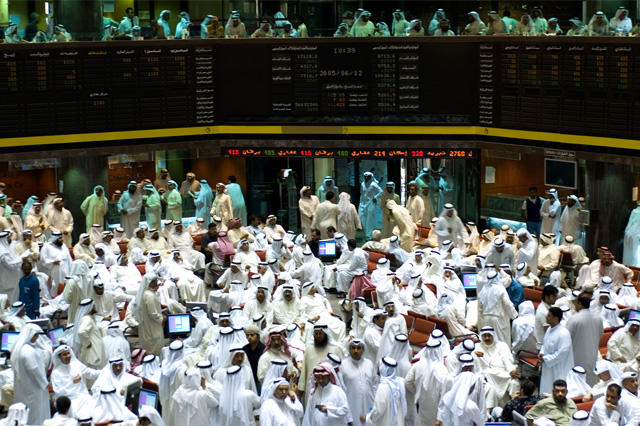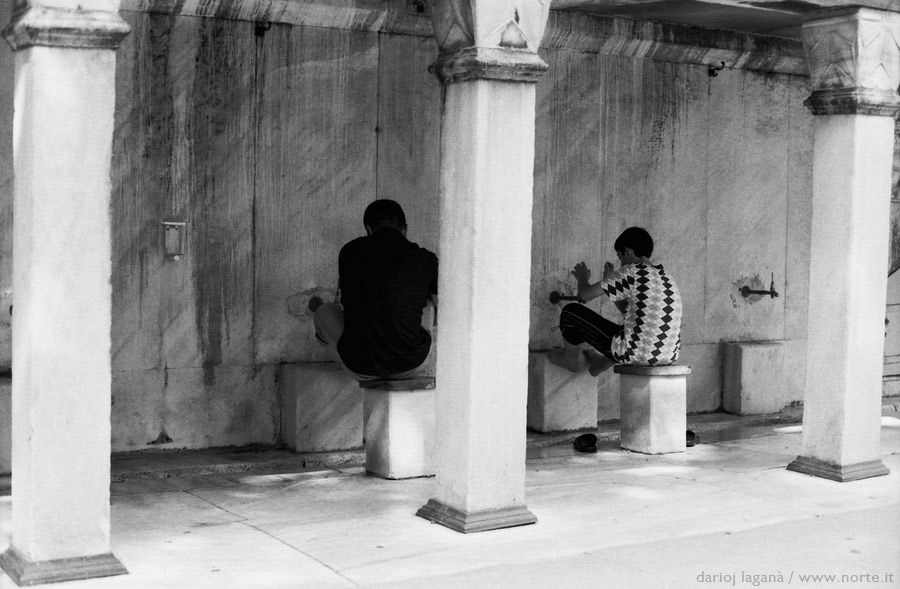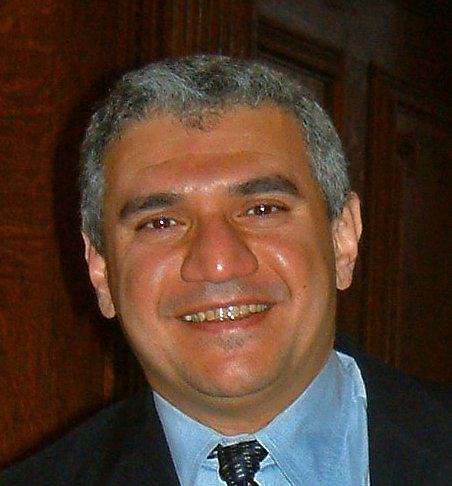
That Islam does not distinguish the religious from the secular is a truism that unites many who speak about Islam. For Islamists, this is a point of pride. For their opponents, this proves that Islam is backwards, if not dangerous, and justifies radical policing of Muslims. For others, however, this just means that Islam is “exceptional,” and “we” should just respect difference and let Muslim societies be. These debates often elide the meaning of both the “secular” and the “religious,” and what is entailed in separating them. The work of Georgetown sociologist of religion Jose Casanova is helpful in sharpening the focus of our inquiry and understanding more precisely what is at stake when we use the secular and religious, and what their respective relationships to modernity are. Casanova has identified three forms of secularization that are characteristic of modernity: institutional differentiation, privatization of religious belief, and the decline of religious belief.
He argues that while all three of these modes of secularization are present in modernity, only the first—the institutional differentiation of various social spheres from religious institutions, such as the market, the state, and the economy—is a universal prerequisite for modernity. In this short post, I wish to argue that Islamic law (fiqh), far from reflecting an obstacle to secularization—at least in the institutional differentiation sense—was historically a catalyst for it. What made Islamic law a particularly powerful tool in creating the institutional differentiation of social life were the embedded Islamic metaphysical commitments to the next life. These reflected a dual understanding of the human: one as a servant of God, and the other as a material reality whose fragility requires particular institutional support for it to flourish. While I believe that this duality permeates the entire structure of Sunnī Muslim approaches to law, the Ḥanafīs, uniquely among the historically dominant Sunni schools of law, explicitly theorized the impact of these two different conceptions of the human on the law. Before presenting the Ḥanafī theory, however, I will first give an overview of the structural features of Islamic law that confirm its role in secularization.
Islamic law (fiqh), far from reflecting an obstacle to secularization—at least in the institutional differentiation sense—was historically a catalyst for it.
Islamic law is divided broadly into two categories, ritual (ʿibādāt) and transactional (muʿāmalāt). The logic of the former is avowedly devotional and this logic is reflected in numerous provisions of the rules themselves, such as, for example, the requirement that the person engaged in the ritual practice be a Muslim, that the person have a subjective intention (niyya) to draw near to God (qurba), and that during performance of the ritual, the worshipper maintain a proper kind of inward (and unobservable) disposition, such as awe (khushūʿ) and tranquillity (ṭumaʾnīna). Indeed, jurists have noted that without the existence of the intention of worship and the presence of the proper inward dispositions, the acts themselves would be meaningless, or worse. Oftentimes, before initiating an act of worship, such as ritual prayer (ṣalāt), the worshipper must engage in a symbolic, but nevertheless very tangible, act of purification, and many rituals, once begun, must be concluded, even if the act was not obligatory. Transactional matters, by contrast, are indifferent to the inward dispositions of legal actors, and instead focus entirely on their manifested intentions. Parties can initiate a transaction and then abandon it, generally without any consequence. And no symbolic act of purification is ever associated with transactional matters.
The various topics within transactional law are in turn each governed by the relevant domain’s rationality. The law of international conflict differentiates between how Muslims should relate to hostile non-Muslim others, for example, from how they should relate to Muslims residing outside Muslim territory, non-Muslims at peace with Muslims but not under Muslim rule, and Muslims living in Islamic territory alongside their non-Muslim allies (ahl al-dhimma). Family law differentiates the household from the market by setting out the former as a site for non-commercial economic and sexual exchange organized pursuant to the logic of the good of the household. Included here are the circumstances that require the household’s dissolution and the consequences of that dissolution in terms of property law and obligations toward former spouses and children. Accordingly, it is governed by an ethic of self-interest that is tempered by concern for the welfare of the other members of the household. Accordingly, legal relations within the household are subject to a norm of generosity (mukārama, musāmaḥa). Commercial law identifies that sector of society in which the pursuit of self-interest in the form of commercial profit is paramount and relations are governed by a norm of fairness understood through the lens of profit-maximization (mushāḥḥa). Tort and criminal law (al-jināyāt, ḥudūd) in turn reflect the overriding necessity to deter antisocial behavior and provide compensation for those who have suffered injuries as a result of the actions of their fellows. Significantly, transactional law (with some exceptions, such as wine-drinking) traditionally applied to all persons in Islamic territory, regardless of religion. This is another feature which contributed to the secularization of Islamicate societies, at least in Casanova’s sense of institutional differentiation.

The only sense in which these rules are not “secular” is their asserted origins in revelation. But in the institutionalized setting of Islamic law of the middle ages and early modernity, law itself had become pedagogically and institutionally differentiated from other religious disciplines such as theology and exegesis, whether of the Qur’an or Prophetic teachings. The differentiation of law from these other subjects was also reflected in how jurists argued that legal doctrines fulfilled different functions and were subject to rationalities appropriate for each sphere of social activity. Accordingly, the logic of religion—with its focus on the cultivation of subjective dispositions toward God as reflected in ritual law—was carefully limited to worship. That concern, however, was absent from the organization of society through law.
The clearest theoretical expression of the metaphysics justifying the institutional differentiation of society through law is found in Ḥanafī jurists’ writings on the concept of the human and the sources for individual inviolability (ʿiṣma).[1] The Ḥanafīs identified two kinds of inviolability, moral inviolability (ʿiṣma muʿaththima) and remedial inviolability (ʿiṣma muqawwima). The former is derived from the Arabic word for sin or wrong, ithm, and is a nod to the notion that the true source of human dignity and inviolability is an individual’s status as a servant of God, and that God will vindicate whatever wrongs done to His servants on the Day of Judgment. Moral inviolability is the truest expression of human anthropology and is therefore the primary source (al-aṣl) of human worth. However, it is vindicated only in the next life, not in this one. Indeed, it would be sufficient for human flourishing if, in fact, we were all truly servants of God.
While from the perspective of divine law, humans are not equal—some of us are sinners, some are saints, some are faithful, and some are deniers—remedial inviolability treats us all as equals insofar as we are all tangible objects whose existence requires that certain material goods be protected.
But there is also a material, object-like dimension to human existence which predominates in this life by virtue of our very real material needs: to eat, to have shelter, to procure the assistance of our fellows, to have protection against aggression, and to procreate, among others. Law is organized primarily around this second dimension of humanness, which produces a conception of inviolability derived from the notion of “value” (qīma). “Value,” while it is an essential attribute of property, is only a secondary attribute of humanness. Law, according to the Ḥanafīs, protects human beings in this life by treating them as though they were property to which “value” can be assigned. This is evidenced by the law’s assumption of the generic sameness (tamāthul) of individuals. Because individuals are essentially the same from the perspective of their material existence, it is possible to articulate general norms that apply to all with respect to violations of their material integrity. I refer to this notion of inviolability as “remedial inviolability” because it refers to the existence of some procedure authorizing the victim of a wrong to receive a remedy to an injury. Such a remedy is intended to vindicate an interest of the injured party, who is here viewed as a material object and not a servant of God. While from the perspective of divine law, humans are not equal—some of us are sinners, some are saints, some are faithful, and some are deniers—remedial inviolability treats us all as equals insofar as we are all tangible objects whose existence requires that certain material goods be protected. The aim of remedial inviolability is not to vindicate our true natures as servants of God, but to protect our secondary nature as material objects that require protection.
Remedial inviolability, however, is not inherent to our humanity; it is the product of membership in political society. Accordingly, although humans are all equal in the sense that they are all in need of some kind of institution to protect their material existence, in fact they only receive that degree of remedial inviolability that the state in which they live is able to secure for them. Our religious inviolability draws us to cultivate the spiritual virtues that will earn us favor from God, but our nature as objects also compels us to seek out a political society that will protect us insofar as we are also material objects. Works such as the Revivification of the Religious Sciences, by the 11th century Sunni theologian, Abū Ḥāmid al-Ghazālī, and al-Muwāfaqāt [The Reconciliations], by the 14th century Andalusian jurist, Abū Isḥāq al-Shāṭibī, in turn mediate between these two dimensions of the human by cultivating in legal subjects a private ethic inclined to the pursuit of their interests as material bodies in a manner consistent with their status as servants of God.
Conflict about the place of Islam in the public sphere then cannot be about secularization in the institutional sense. Instead, debates about Islam and the public sphere break down along different conceptions of secularization: stadial secularization versus the secularizing of Muslim reformers who seek to pursue a strategy of institutional differentiation using the internal resources of Islam. The stadial conception of secularism, which is dominant in continental Europe, views religion as a pre-modern stage of human consciousness that must be transcended for a society to be modern. Muslim intellectuals who have adopted a stadial conception of secularism seek the decline of religious belief as an end in itself, because that is the measure for successful “secularization” and becoming fully modern. Conversely, to the extent that religious adherence remains high, then such societies remain distinctly unmodern, even if they become highly differentiated from an institutional perspective and thus, from Casanova’s perspective, are secularized in the first and universal sense. What is at stake from the perspective of stadialist secularists is not securing the conditions for the autonomous flourishing of the different social spheres, but the liberation of society from superstition represented by belief in religion. Conflict about Islam’s proper place in the public sphere in the Muslim world is therefore a conflict between the purveyors of two different secularizing movements: non-religious intellectuals who share a continental view of “progress” and the necessity of placing religion in the past, and secularizing religious intellectuals who, using the language of Islamic legal and social reform with its roots in the 19th century, seek to further rationalize the content of Islamic law so that it can further the institutional differentiation required for an Islamic vision of modernity to flourish.
What is perhaps ironic in the modern battle of the role of Islam in public life is the role that traditional religious intellectuals play. Insofar as they are concerned primarily with the private virtues of religious devotion, they can be understood as pursuing the second of Casanova’s three modes of secularization, namely the privatization of religious belief. The indifference or even outright hostility of traditional religious intellectuals toward secularizing religious reformers can be understood as a function of the fact that they view the latter as direct competitors for the hearts and minds of the religious public, while stadialist secularists are not viewed as sociologically viable competitors in the religious sphere. Any alliance between traditional religious intellectuals and stadialist intellectuals can only be tactical, however. Each side may perceive certain short-term benefits with allying with the other. Stadialists may prefer traditionalist religious intellectuals to secularizing religious reformers because the indifference of traditionalists (and at times their outright hostility) to the secularization of society confirms their view that religion is a stage of development to be transcended on the way to modernity, and the resistance of traditional religious intellectuals to secularization might even accelerate this process if the mass of society comes to view religion as an obstacle to the institutional differentiation of the public sphere as Casanova argued took place in continental Europe. Traditionalists, meanwhile, even though they recognize the ideological threat that stadialist secularism poses to religion, may believe that its views are so socially implausible that stadialists are the lesser of two evils.
Ironically, it is the stadialist secularists who are pursuing a project that fails to distinguish between the metaphysical and sociological. By insisting that societies can only be modern by exiling religions to the most extreme margins of social life, they seek to impose their own metaphysical anthropology on society without the restraint that Islamic metaphysics, with its distinction between “human-as-servant” and “human-as-object,” achieves.
[1] See Ibn al-Humām’s Fatḥ al-Qadīr starting at the bottom of page 28.

